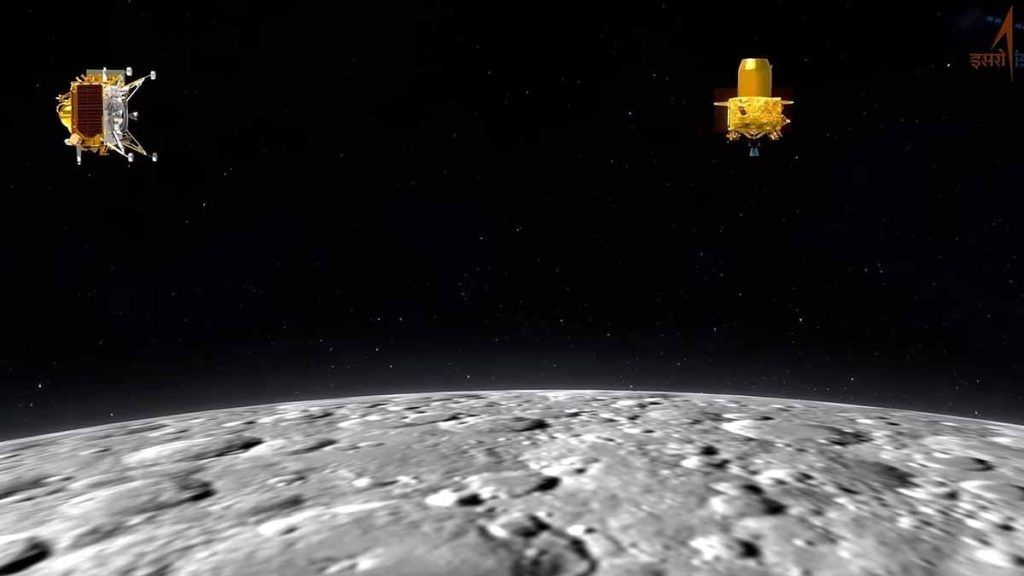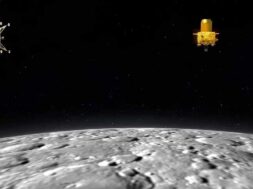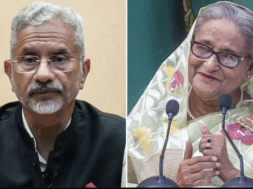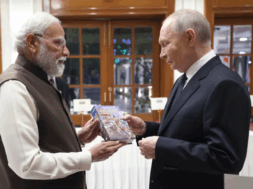
Manas Dasgupta
NEW DELHI, Aug 20: The lander module “Vikram” has come close to 25 kilometres to moon after the second and final de-boosting operation of India’s Moon mission Chandrayaan-3 was successfully completed on Sunday morning.
The scientists at the Indian Space Research Organisation (ISRO) were closely monitored the critical phase ahead of the spacecraft’s landing on the lunar surface on Wednesday evening, particularly after Russia’s similar moon mission Luna-25 crashed on Sunday.
The lander Vikram has placed itself in an orbit where the closest point to the Moon is 25 km and the farthest is 134 km. It is from this orbit that it will try a soft-landing in the unexplored south polar region of the Moon on Wednesday, ISRO has said.
“The second and final deboosting operation has successfully reduced the LM orbit to 25 km x 134 km. The module would undergo internal checks and await the sun-rise at the designated landing site. The powered descent is expected to commence on August 23, 2023, around 1745 Hrs. IST,” ISRO posted on X.
The lander Vikram has been descending in the Moon’s orbit in an automated mode; it has been deciding on its own how to go about its functions. During the first de-boosting operation on Friday, former ISRO chief K Sivan had said the Chandrayaan-3 lander’s design was the same as the one used in the previous Chandrayaan-2 mission. “There is no change in design. Based on observations from Chandrayaan-2, all errors that took place in the mission have been corrected,” he had said.
A successful Moon landing will make India the historic fourth country after the US, China, and Russia to achieve this feat. On Thursday, the lander module separated from the propulsion module that had carried it all the way from Earth. The propulsion module will now continue orbiting for months or even years, and study the atmosphere and measure the polarisation of light from clouds.
Following the detachment, the lander shared its first images of the Moon on Thursday. Once on the Moon, the lander Vikram will photograph the Pragyaan rover, which will study the chemical makeup of the Moon’s surface and search for water. It has a lifespan of one lunar day, equivalent to 14 days on Earth.
Chandrayaan-3 was launched into space by the LVM3 rocket from the Satish Dhawan Space Centre in Sriharikota on July 14. It entered the lunar orbit on August 5.
The ISRO on Sunday announced the date and time of the historic landing through a tweet, which read, “Chandrayaan-3 is set to land on the Moon on August 23, 2023, around 18:04 Hrs. IST.” The powered descent is expected to commence at 5.45 p.m. on the designated day. The ISRO said the module would undergo internal checks and await the sun-rise at the designated landing site.
It also told people how to watch the historic event. It said the “eagerly anticipated event” would be live broadcast on Wednesday “starting from 17:27 Hrs. IST. The live coverage will be available via multiple platforms, including the ISRO Website, YouTube, ISRO’s Facebook page, and DD National TV channel.”
ISRO added, “In light of this, all schools and educational institutions across the nation are invited to play an active role in this historic event. The institutions are invited to actively publicise this event among your students and faculty and organize the LIVE streaming of the Chandrayaan-3 soft landing within the premises.”














